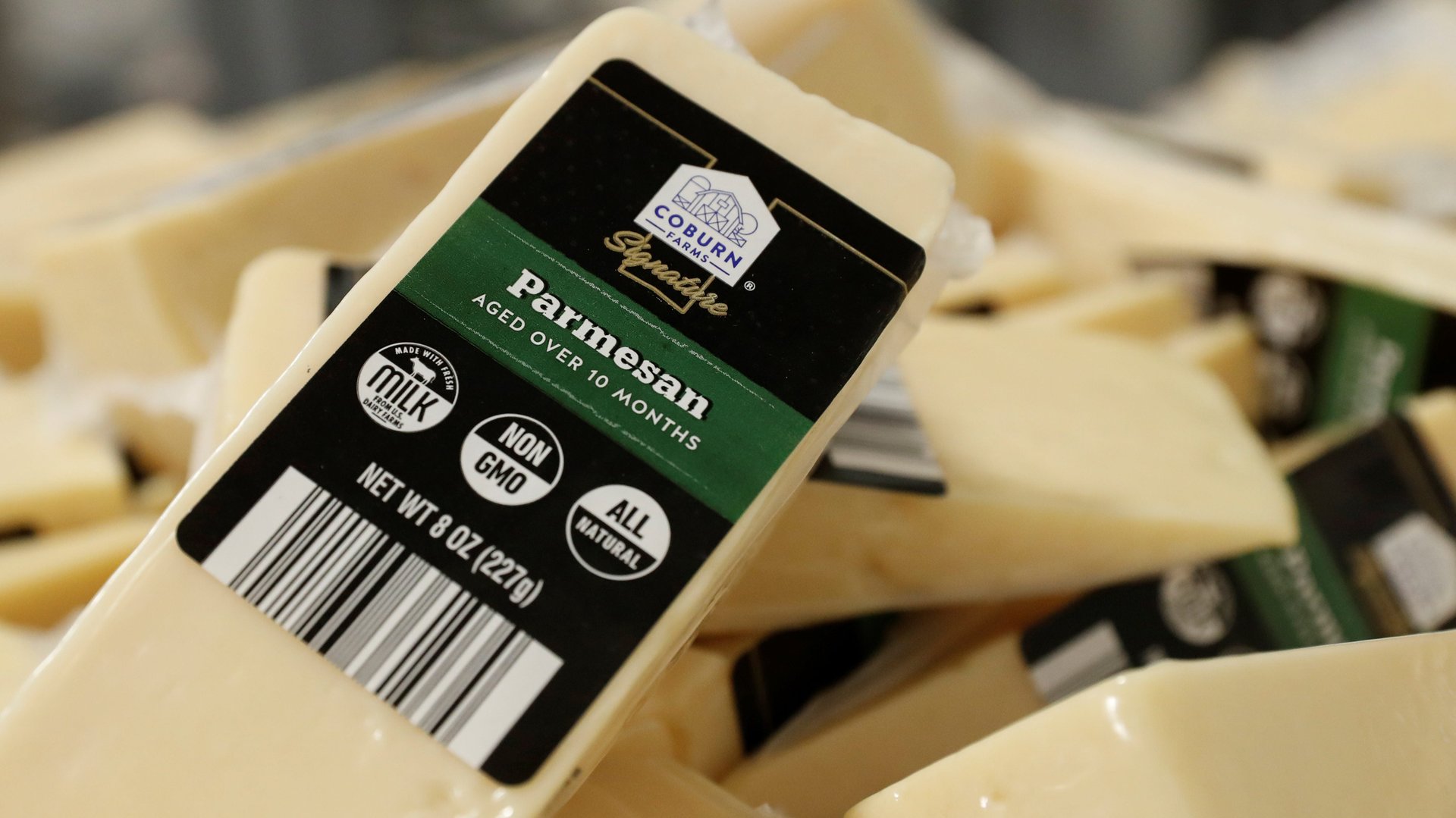How Italy’s cheese consortium is cracking down on $2 billion in counterfeit parmesan
Parmigiano Reggiano, known as the “King of Cheeses,” is so prized that it has inspired a counterfeit market.


Parmigiano Reggiano, known as the “King of Cheeses,” is so prized that it has inspired a counterfeit market.
Sales of Parmigiano Reggiano hit $2.44 billion euros ($2.63 billion) in 2019, as estimated by the Parmigiano Reggiano Cheese Consortium, a trade group founded in 1934 and comprised of producers from the provinces of Parma, Reggio Emilia, Modena, Mantova and Bologna, who work to defend and protect the authenticity of the cheese. The counterfeit Parmigiano Reggiano market is worth $2 billion euros ($2.14 billion)—almost as much as the real market.
The consortium is hoping to help curb cheese fraud. Later this year tracking chips, no bigger than a grain of rice, will be embedded in 100,000 wheels of Parmigiano Reggiano. Currently an experiment, the consortium said it will determine whether to make adding this technology a permanent part of the cheese’s production. The idea is that the device will allow the consortium to better control its inventory and differentiate its cheeses from the fakes. Specifically, the chip will be inserted in the casein label, located on the rind.
“If a cheese was made in the same way as Parmigiano-Reggiano, but in a different region, it could not legally be called Parmigiano-Reggiano,” wrote Josh Windsor, a manager at Murray’s Cheese, a retailer in New York City, in an email to Quartz. “As such, it is often the target of theft, and a black market has grown up around the cheese.” He added, that real Parmigiano Reggiano can serve as collateral for a bank loan in parts of Italy.
He said that if the chips turn out to be successful in stopping fraud, Murray’s would be interested in using the technology.
How to detect fraudulent Parmigiano Reggiano
So what makes cheese authentic? Parmigiano Reggiano contains only three ingredients: milk, salt, and rennet, and is produced in a specific region, which gets it a Denominazione d’Origine Protetta (DOP) or Protected Designation of Origin label. Many so-called parmesan cheese products on the market are not actually Parmigiano Reggiano, cannot call themselves that, and are made with other ingredients. For instance, Kraft 100% Grated Parmesan Cheese is not made in Italy and uses potassium sorbate and cheese cultures.
Sometimes even parmesan, the Parmigiano Reggiano-like cheese widely produced outside of Italy, isn’t really even cheese. In 2016, the US Food and Drug Association (FDA) busted Castle Cheese for selling its cheese as real parmesan when it was actually cut with fillers like wood pulp. The president of the company was scheduled to plead guilty to criminal charges and faced up to a year in prison and a $100,000 fine. But the cases of cheese being bulked out with wood pulp continue. In 2018, a US federal judge dismissed the central claim in lawsuits accusing five food producers and retailers of deceiving consumers by using “100% Grated Parmesan Cheese” labels to describe products that contain wood pulp.
Deception in food can be found elsewhere as well. Wine fraud has been a problem as long as people have been putting labels and vintages on wines. The seafood industry is notorious for substituting cheaper species for more expensive fish. And like Parmigiano-Reggiano, Kobe beef producers have both copyrights and trademarks protecting different aspects of their name and brand in Japan. A small sliver of people actually eat real Kobe beef—only eight US restaurants reportedly serve real Kobe beef and none is sold in stores—and yet consumers are charged high prices for meat claiming to be something it is not.